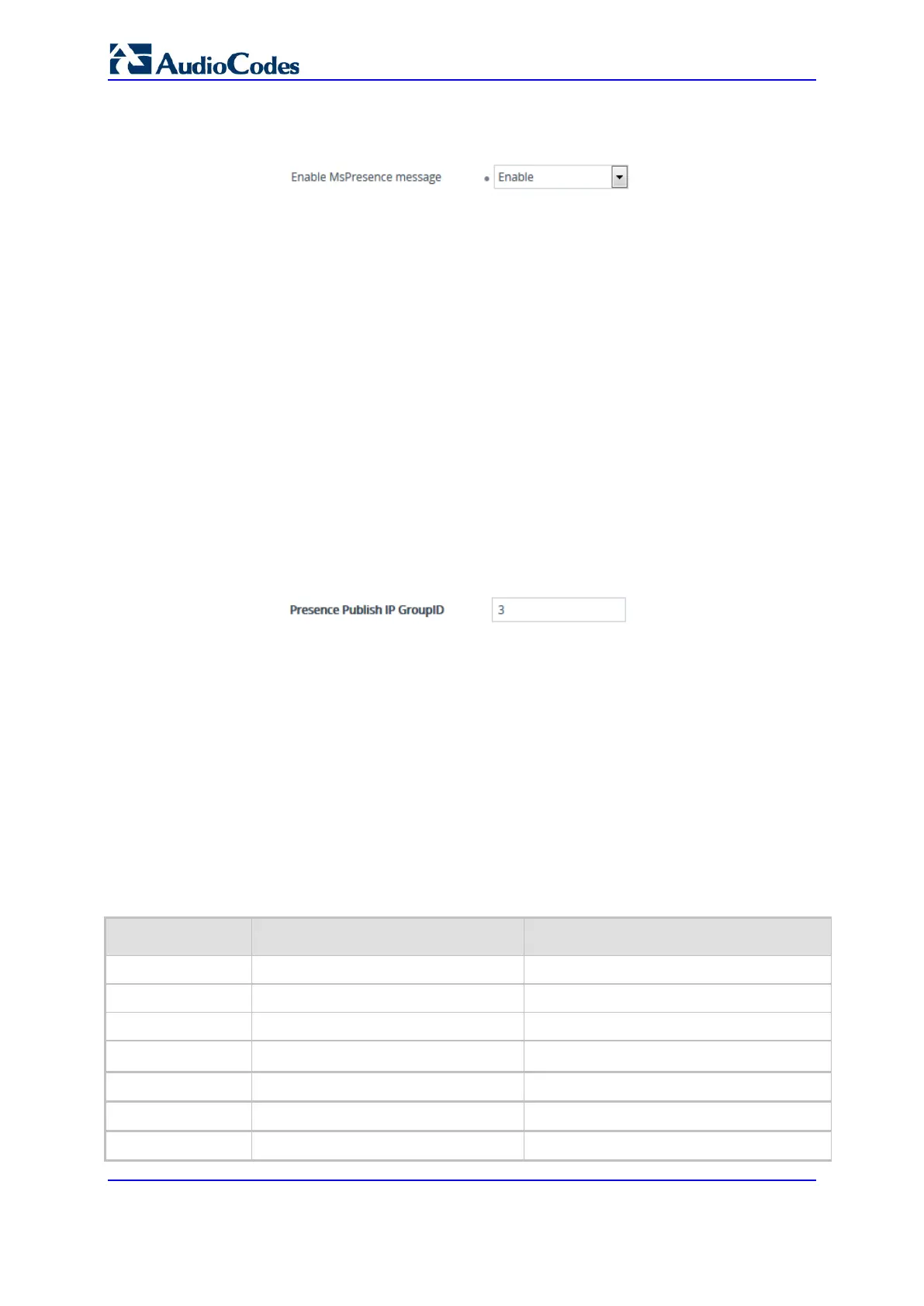User's Manual 310 Document #: LTRT-27055
Mediant 1000B Gateway & E-SBC
drop-down list, select Enable:
Figure 15-60: Enabling Microsoft Presence Integration
2. Configure a TLS Context (TLS certificate) for secured communication (mutual
authentication) between the device and the Skype for Business Server (see
Configuring TLS Certificate Contexts on page 109).
3. Configure a Proxy Set to define the address of the Skype for Business Server (see
Configuring Proxy Sets on page 367). Make sure you configure the following:
• 'TLS Context Name': Assign the TLS Context that you configured in Step 2
(above).
• 'Proxy Address': Configure the address (FQDN or IP address).
• 'Transport Type': TLS
4. Configure an IP Group to represent the Skype for Business Server (see Configuring IP
Groups on page 353). Make sure that you assign it with the Proxy Set that you
configured in Step 3 (above).
5. Assign the IP Group of the Skype for Business Server as the destination (presence
gateway) to where the device must send the PUBLISH messages: open the SIP
Definitions General Settings page (Setup menu > Signaling & Media tab > SIP
Definitions folder > SIP Definitions General Settings), and then in the 'Presence
Publish IP Group ID' field, enter the IP Group ID of the Skype for Business Server that
you configured in Step 4 (above):
Figure 15-61: Assigning IP Group of Presence Gateway
6. Configure the Skype for Business LDAP server (Active Directory) to query for the
Skype for Business users' SIP URIs (see Configuring LDAP Servers on page 244).
7. Configure Call Setup Rules to perform LDAP queries in the Microsoft Active Directory
for the SIP URI of the caller (source) and called (destination) parties (see Configuring
Call Setup Rules on page 393). The device first needs to search the AD for the caller
or called number of the third-party endpoint device. For example, to search for a called
mobile number, the searched LDAP Attribute would be "mobile" set to the value of the
destination number (e.g., 'mobile=+' + param.call.dst.user). If the entry exists, the
query searches for the Attribute (e.g., ipPhone) where the SIP URI is defined for the
corresponding mobile user. If found, the query returns the Attribute's value (i.e., URI)
to the device (instructed using the special 'Condition' string "presence.dst" or
"presence.src"). This is the URI that the device uses as the Request-URI in the
PUBLISH message that it sends to the Skype for Business Server. The configuration
of the example used in this step is shown below:
Parameter Rule 1 Rule 2
Query Type
LDAP LDAP
Search Key 'mobile=+' + param.call.dst.user 'mobile=+' + param.call.src.user
Attributes To Get ipPhone ipPhone
Condition ldap.attr.ipPhone exists
ldap.attr.ipPhone exists
Action Subject presence.dst presence.src
Action Type
Add Add
Action Value ldap.attr.ipPhone ldap.attr.ipPhone

